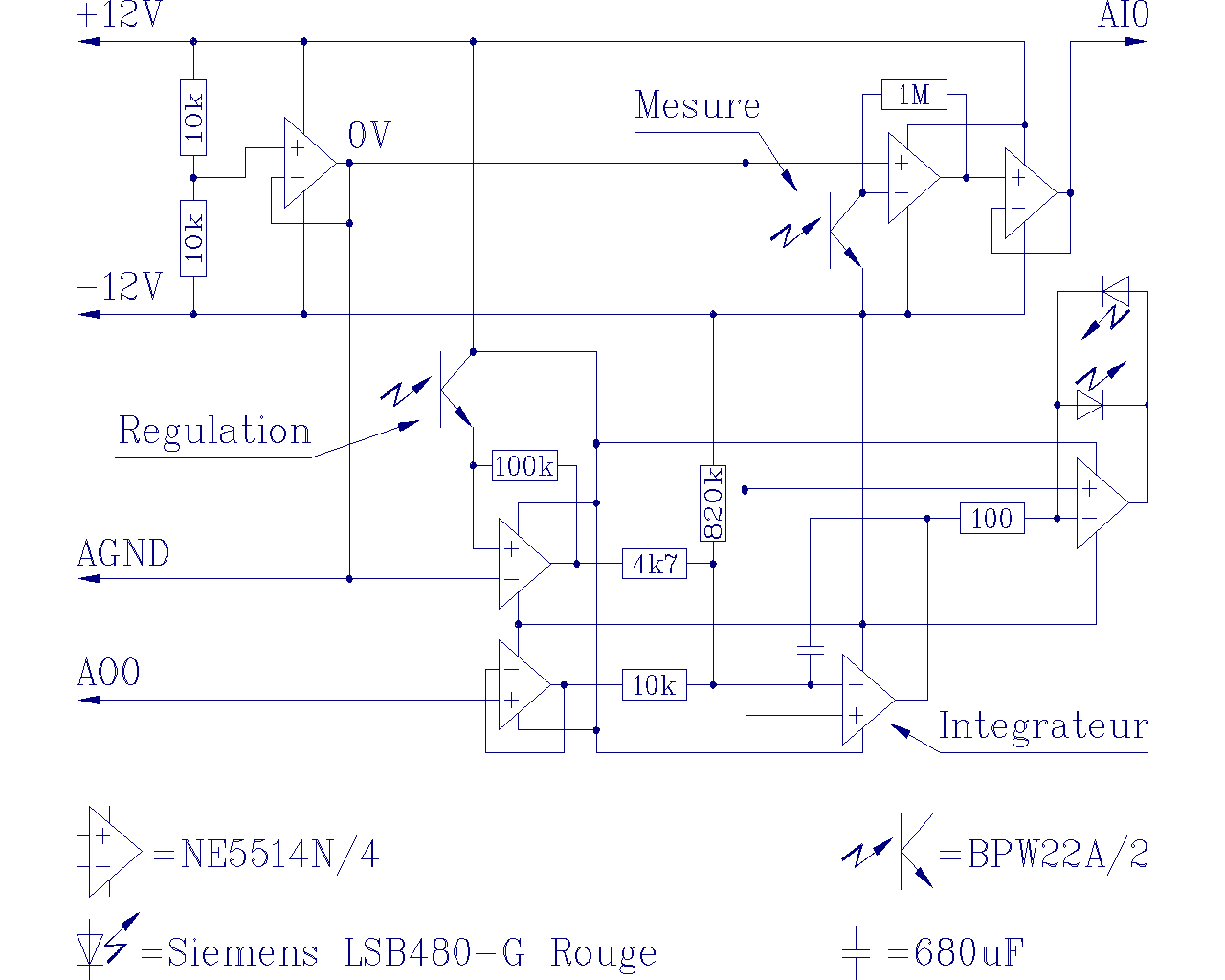
More than ten year ago, I built a small apparatus to measure the
transparency of plastics and glasses. To obtain very good results, the light
source, a LED, needed to be stabilised. A subcircuit of the whole "transparencymeter"
can be used as a stabilised controlable light source for various usages.
A 16 bits digital-to-analog converter was assigned a certain voltage by a PC software. These controled voltage was applied between AGND and AO0 of the circuit below. The circuit was alimented in stabilised 24V, between +12V and -12V.
As the phototransistors were not very-linear, a process to determine the non-linear relation between the digital-to-analogic order-value and the flux was necessary (but easily programmable). But for a given order-value from the DAC, the flux from the LED, as measured by the "mesure" phototransistor, was amazingly stable over a very long laps of time (more than 1h), reaching the stability of the 16 bits analogic-to-digital converter used (between AGND and AI0), when measurements were packed by blocks of 10s - thanks to a PI regulator.
The regulation phototransistor was mounted at the rear of the active LED (the other was active with negative order-voltage) with a mechanically stable support, but without contact with the LED (to avoid thermic problems).
Actually, there are probably better phototransistors and photodiodes... but that was already a really low cost stabilised light source. Of course, if one desire only a stabilised light source, the "mesure" part of the diagramm is not necessary.

Scheme (c) R. Behrend. Free for non-commercial use, provided a link is given to this page. Military use strictly forbidden.
Some links:
/